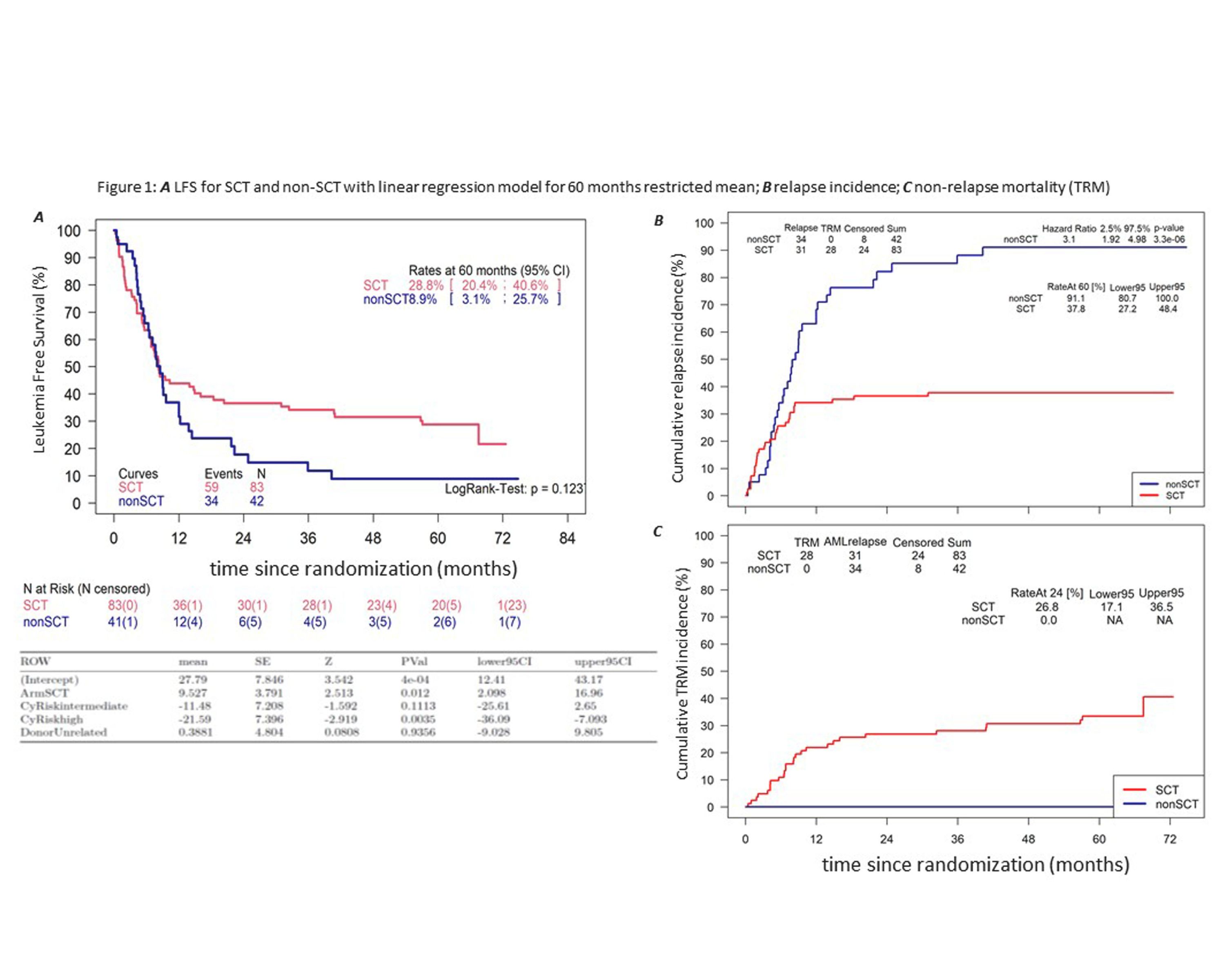Research presented at the 64th American Society of Hematology (ASH) Annual Meeting and Exposition reviewed outcomes of older patients with acute myeloid leukemia (AML) in their first complete remission (CR1) receiving allogeneic hematopoietic cell transplantation (alloHCT) and compared them to patients who received only conventional consolidation therapy.
The study showed patients with AML aged 60-75 years who received alloHCT in CR1 had better leukemia-free survival (LFS) than patients receiving non-alloHCT consolidation therapy over a follow-up of five years, providing evidence that HCT may be a better option for older patients with AML who are able to achieve a complete remission.
Background
AML has a dismal prognosis, especially in older patients where very high relapse rates result in approximately 20% or lower long-term survival. AlloHCT is the treatment modality with the highest anti-leukemic potential, especially when combined with immunological therapies.
Retrospective analyses and comparisons with alternative treatments have indicated a possible advantage of alloHCT, but selection biases in these cohorts remain a concern. Since randomized trials have been lacking, the study team investigated the role of alloHCT compared to non-HCT conventional consolidation therapy in an international, multicenter, open-label, randomized phase III trial.
Study Details
The study cohort initially registered 245 patients aged 60-75 years (median age 67) newly diagnosed with AML from 2010 through 2017. They were treated with induction therapy, and an HCT donor search was initiated on reaching CR1. After one consolidation therapy cycle and participation adjustments, 179 patients underwent cytogenetic/molecular and comorbidity evaluations.
Patients with an available related or unrelated donor (125) were randomized to alloHCT (n=83) or non-HCT (n=42) groups. The primary endpoint was LFS, and secondary endpoints included relapse, treatment-related mortality (TRM), and overall survival (OS).
Results
After a follow-up of 62 months, the 5-year LFS was approximately 29% in the alloHCT group compared to 9% in the non-HCT group. There was a statistically significant difference favoring the alloHCT group in LFS by approximately 9 months, as shown in Figure 1A.
The relapse rate was significantly higher in the non-HCT group (91%) compared to the alloHCT group (38%), as shown in Figure 1B. TRM was higher in the alloHCT group, which was an expected finding. The 5-year observed survival for the alloHCT group (31%) was higher than the non-HCT group (27%).
Key Takeaways
Older patients with AML who achieve CR1 can benefit from alloHCT using a matched related or unrelated donor. This randomized trial provides evidence that alloHCT may be superior to non-HCT consolidation treatment for LFS in older patients with AML in CR1 over five years. HCT may substantially reduce the incidence of relapse, which can outweigh the associated transplant-related mortality.
This trial highlights the importance of early donor search to optimize outcomes, as well as the utility and safety of transplant in older patients. The prognosis for these patients may become more favorable as further research supports early donor search and alternative donor sources as viable and safe options.
Figure 1. Outcomes for HCT (Stem Cell Transplant or SCT) and Non-HCT Treatment

Niederwieser D, et al., ASH Abstract
